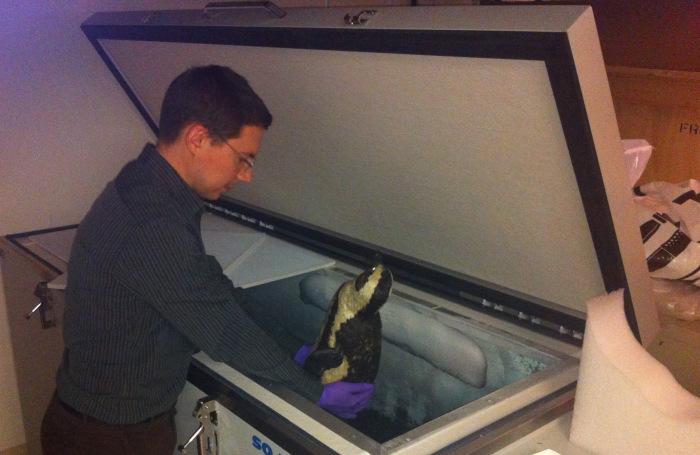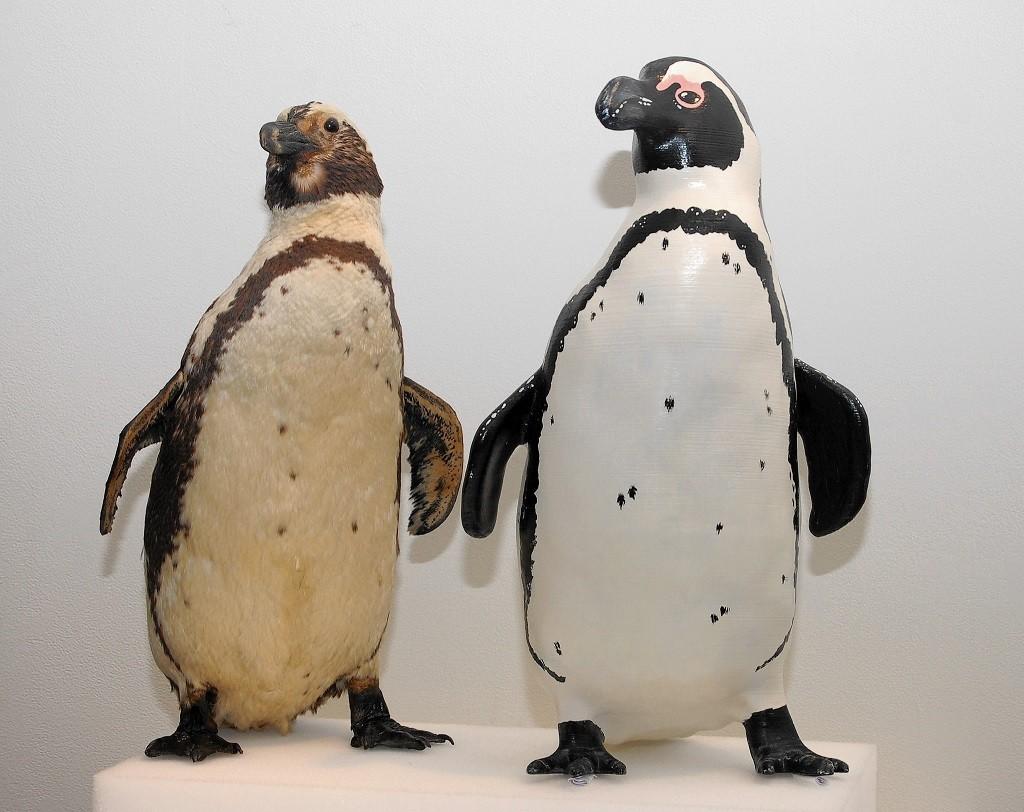 Just the word ‘penguin’ brings to mind the good-natured waddle of those flightless birds that so easily elicit smiles. Penguins amuse us, fascinate us, and inspire us — and now, one of them will be on display in 3D print for everyone to see in Greenwich, CT, just in time for National Penguin Day on January 20th.
Just the word ‘penguin’ brings to mind the good-natured waddle of those flightless birds that so easily elicit smiles. Penguins amuse us, fascinate us, and inspire us — and now, one of them will be on display in 3D print for everyone to see in Greenwich, CT, just in time for National Penguin Day on January 20th.
In a project just completed by Dr. Dan Ksepka, curator of science at the Bruce Museum, and MakerBot of Greenwich, they’ve used 3D printing not only to create a splash at their celebration and lecture regarding the esteemed penguin on January 20th, but also as an example of how 3D printing can be used to manufacture specimens for display that are low maintenance, and can be created easily and affordably.
While it’s always entertaining to go to a museum of any sort, we often don’t stop to consider the amount of care that goes into a collection, whether it is at an art museum, historical museum, natural museum, or even a zoo. Science museums particularly rely on specimens, which can often be quite diverse and share a lot of data with museum-goers. Usually made by hand, they are created for display, for public enjoyment, and education. The specimens may also be created primarily for research purposes.
When it comes to bird and mammal specimens, they are often created through taxidermy, with bird specimens traditionally being displayed as ‘stuffed skins,’ with wires used as supports. The specimens have to be ‘curated,’ watched over, and preserved.
At the Bruce Museum, they also take fastidious care of their specimens, even often removing them from their collection cabinets, sealing them in bags, and placing them into a deep freezer for up to a week, to kill any pests that might be harbored in the feathers. The specimens are valued, and meant to last for a long time.
The Bruce Museum encompasses both art and science in their facility, and now they are embracing progressive technology to streamline the curation process, beginning with their black-footed penguin, a specimen which the museum originally acquired from South Africa. Partnering with MakerBot, with a deadline for National Penguin Day, the penguin was scanned and then 3D printed, beginning with a smaller sample, and then evolving to the full-size, painted 3D print to be shown off at the museum’s lecture night on January 20th.
The resulting 3D print is very similar in size to the original. While all of the markings were not completely accurate due to some minor limitations of 3D scanning, the colors represented the penguin nicely, as they had faded on the older, original specimen. Penguins are noted for their striking coloring and the famous “collar” around the face and neck.
“Overall it is really nice to have not only a light weight printed replica of our penguin, but a virtual copy that can be viewed instantly on a computer,” Dr. Ksepka noted in his blog.
These hardy birds vary in size anywhere from 16 inches to four feet tall and are found only in the Southern Hemisphere — mainly Antarctica — where they are free from the predatory threat of animals like the polar bear. Feeding on krill, fish, and squid, some of them can swim up to approximately 20 mph, and they usually live in enormous colonies, which can be populated into the thousands. With so much variety in the penguin species, there are certainly many more which can be enjoyed in 3D print, with the black footed penguin being just the tip of the iceberg — and perhaps we should 3D print a replica of one of those as well, to add to the scenery? Just a thought!
“Penguins are beloved to people throughout the world for charming behaviors and their remarkable ability to survive in extreme environments like Antarctica,” Dr. Ksepka notes. “They make perfect ambassadors for conservation.”
It will be interesting to see what impact the technology of 3D printing will have on museums, and curation and creation of specimens as more institutions explore the options availabile, recognizing the number of benefits 3D scanning and 3D printing can offer both to their aesthetic displays, as well as the bottom line.
Tell us what effects you think 3D printing can have on museum curation and specimens in the 3D Printed Black Footed Penguin forum over at 3DPB.com.
Subscribe to Our Email Newsletter
Stay up-to-date on all the latest news from the 3D printing industry and receive information and offers from third party vendors.
You May Also Like
3D Printing News Unpeeled: A $3000 SLS System, Construction Subsidies and Parameters
The Housing Affordability Crisis is one of Canadian President Trudeau’s biggest issues. Now the government has made subsidies available, including scaling new technologies, 3D printed housing and libraries of reapproved...
“Bundled Light” Enables High Quality Plastic 3D Printing from LEAM
Naturally, we expect current 3D printing methods to continuously improve, but it continues to do so in the most surprising ways. The latest development comes from LEAM, a startup spun...
Each to Their Own: Exploring Creality’s Latest Ender Trio as the Company Strengthens Its Commitment to 3D Printing Advocacy
Creality has reaffirmed its commitment to promoting 3D printing. The launch of the Ender-3 V3 SE, Ender-3 V3 KE, and Ender-3 V3 showcases the company’s dedication to catering to diverse...
3D Printing News Briefs, March 23, 2024: AM in the US Coast Guard, Navy, & More
In today’s 3D Printing News Briefs, we’re discussing the use of 3D printing in various branches of the military, including the U.S. Coast Guard, the U.S. Navy, and the German...



































